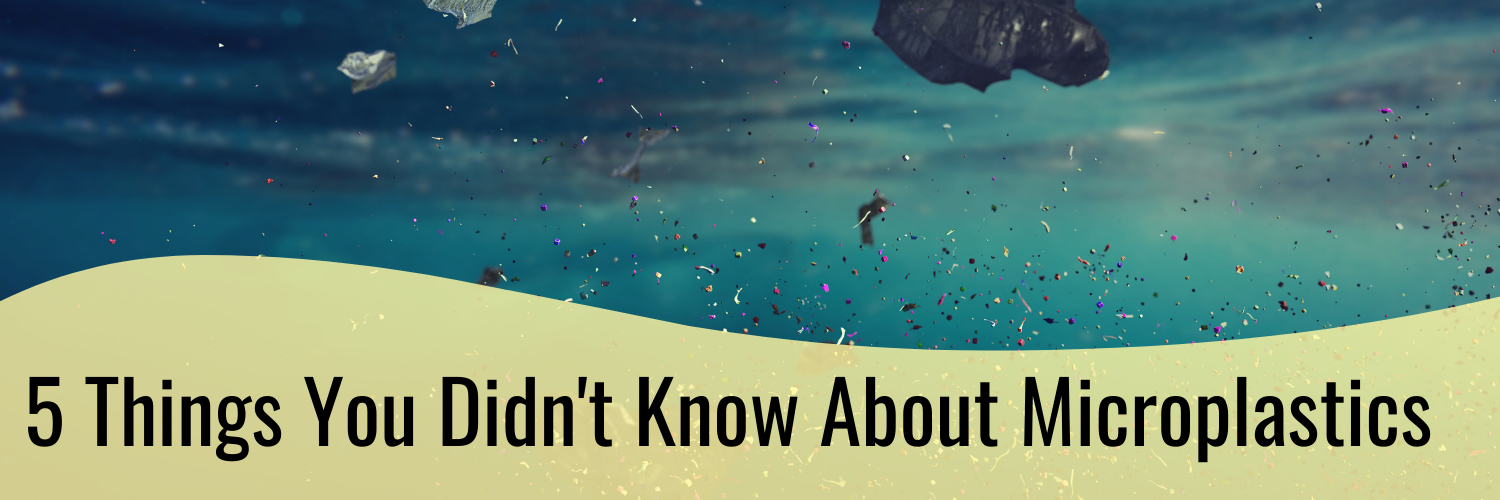5 Things You Didn't Know About Microplastics
In our last Microplastics post, we gave you an overview. Now it’s time to offer deeper information to help you understand why we care so much about this issue. These facts are bleak, but knowledge is the first step to making a change, and we hope this information ignites a passion in you to help keep plastics out of our local waterways.
The Amount of Microplastics in the Ocean Is Staggering
Scientists have been attempting to figure out how much microplastic is in the ocean. In a 2020 study, authors suspected previous estimates were too low. Their study estimates that the ocean contains anywhere from 12.5 to 125 trillion microplastics particles, making microplastics the most abundant type of marine debris.
8 Million Metric Tons of Plastic Enters the Ocean Each Year
If you’re wondering how so many microplastics got into the ocean, think about how much plastic enters the ocean each year: 8 million metric tons. That number is hard to envision, but it’s the equivalent of dumping 15 full garbage trucks into the ocean each minute. Or think of it this way: 8 million metric tons of plastic grocery bags would stretch between the Earth and the sun 65 times! Humans have already caused an estimated 150 tons of plastic to become lost in the oceans.
60% of All Plastic (Ever) Is Landfilled or Lost
Many types of plastic are recyclable, but it’s clear that much of it doesn’t get recycled. A whopping 4.9 billion metric tons of plastic has either made its way into landfills or become lost in the environment. That’s almost 60% of the plastic we’ve ever made. As you can see, refusing single-use plastics and choosing reusable items is pressing.
Microplastics Don’t Look Dangerous
Examples of a microplastic fiber, fragment, and film. These samples were collected in Pinellas County and were analyzed by KPB.
You may be wondering why microplastics are dangerous. After all, you need a microscope to see them. Their size is what makes them insidious; they’re small, but they’re not digestible, and they never fully biodegrade. Instead, they hang around in our water, our food sources, and our soil. Microplastics have even been found in deep ocean crevasses. We simply don’t know what kind of long-term effects these plastics will have on human and ecosystem health.
You Can Stand up Against Microplastics With Us
We have to admit, this information fires us up! Our Education Program Coordinator, Devon Francke, initially dreamed up a microplastics initiative, and with the help of a Tampa Bay Estuary Program mini grant, KPB began developing a microplastics program. Today, the program is responsible for taking more than 77 samples of Pinellas County waters since 2020 began and assessing those samples for microplastics using the Florida Microplastics Awareness Project’s methodology. KPB also offers microplastics educational materials appropriate for classrooms and community events. We recently launched a Microplastics Ambassador program, which gets citizen scientist volunteers out into the field taking microplastics samples and learning to assess them in a lab setting.
This information is daunting, so focus on the choices you make. Remember to refuse single-use plastics, to reuse when possible, and to be diligent with your recycling. Every time you go for a reusable water bottle or bag instead of the plastic option, you’ve prevented a piece of plastic from making its way into a landfill or into the ocean. Tell people what you’ve learned, too! The more people become aware of this problem, the more we can gather together to do something about it. Let’s work together to stop the flow of plastic into the ocean!


